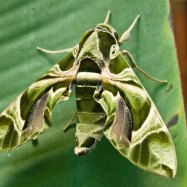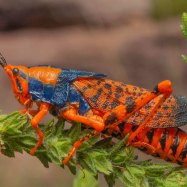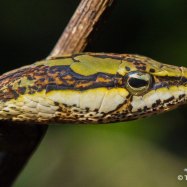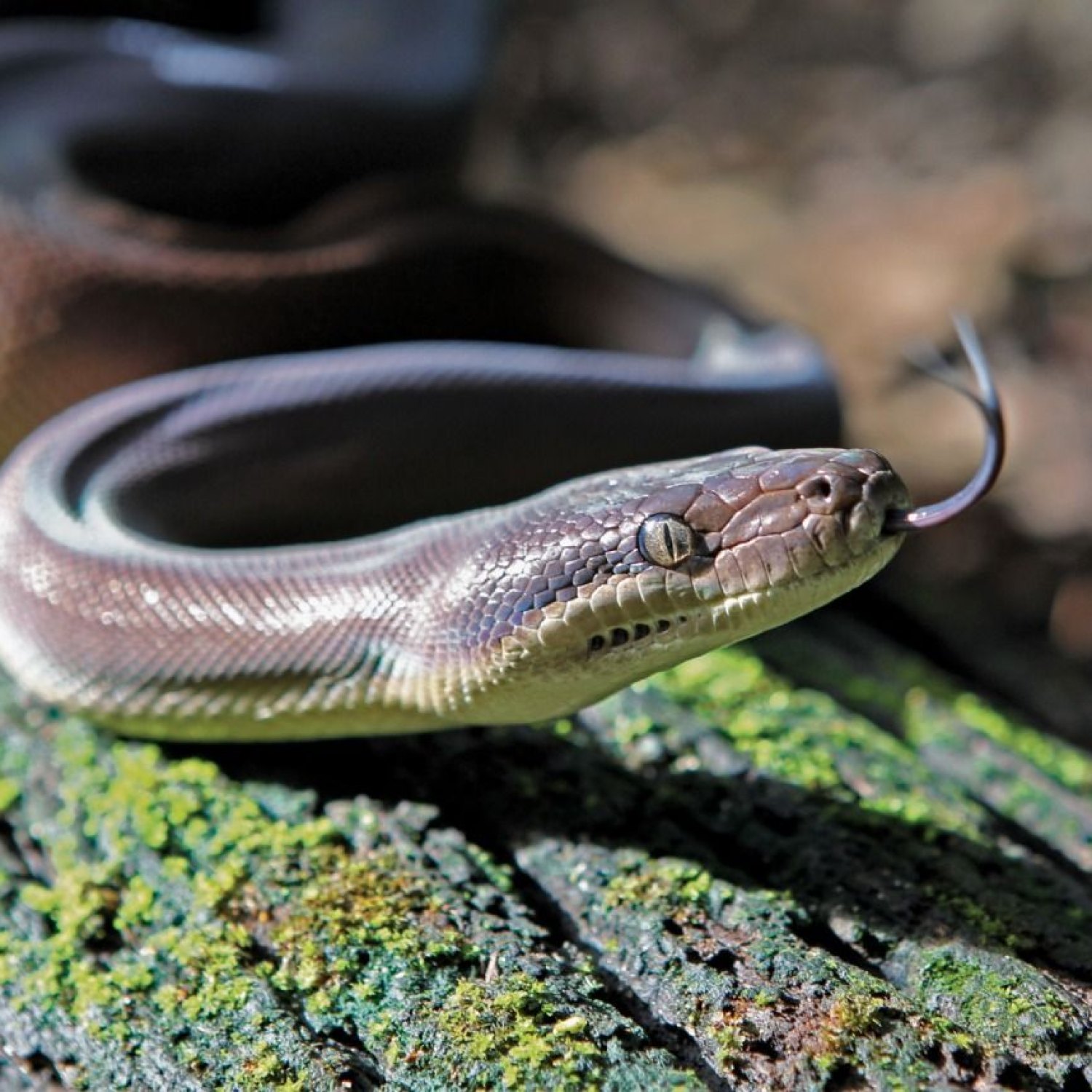
Olive Python
Up to 4 meters
The Olive Python, also known as the Liasis olivaceus, is a large and robust snake found in Northern and Western Australia, Papua New Guinea, and Indonesia. It can grow up to 4 meters in length and belongs to the python family. Its unique body shape, with a thick body and broad head, makes it a fascinating species to spot in the wild. #OlivePython #Australia #Wildlife
Animal Details Summary:
Common Name: Olive Python
Kingdom: Animalia
Habitat: Tropical savannas, grasslands, and open woodlands
The Magnificent Olive Python: A Giant of the Australian Wilderness
The animal kingdom is full of wonders, and one of the most fascinating creatures to inhabit the vast wilderness of Australia is the Olive Python. With its unique appearance, impressive size, and remarkable abilities, this magnificent serpent has captured the attention of nature enthusiasts and researchers alike.Scientifically known as Liasis olivaceus, the Olive Python is a member of the Reptilia class and Pythonidae family. It is commonly referred to as the "Olive Python" due to its coloration, which varies from light brown to dark olive-brown with irregular black markings, making it camouflaged in the Australian outback Olive Python. Let's delve deeper into the world of this incredible species and discover what makes it stand out among other snakes.
The Habitat and Distribution of Olive Pythons
Olive Pythons are primarily found in the northern and western regions of Australia, particularly in the Northern Territory, Western Australia, and Queensland. They can also be found in parts of Papua New Guinea and Indonesia. They prefer warm and dry environments such as tropical savannas, grasslands, and open woodlands. These habitats provide an ideal environment for Olive Pythons to hunt for prey and hide from potential predators.The large and robust Olive Python is a semi-arboreal species, meaning it spends a considerable amount of time in trees. This lifestyle allows them to have easy access to prey, which includes small mammals, birds, and reptiles that dwell in trees. However, they are also known to spend time on the ground, where they can often be found basking in the sun or hiding in burrows.
The Feeding Behavior and Adaptations of Olive Pythons
As a carnivorous species, Olive Pythons have a diverse diet, ranging from small rodents to large mammals like kangaroos Orange Baboon Tarantula. They are skilled hunters and use various hunting strategies depending on the size of their prey. For smaller prey, they rely on their powerful constriction abilities, while for larger prey, they use their sharp teeth and jaws to deliver a fatal bite.Olive Pythons are also known for their exceptional adaptability. With their wide distribution across different landscapes, they have the ability to thrive in various environments and adapt to different prey. They have a unique way of consuming their large prey, which includes squeezing the prey's body against a branch or tree trunk to aid in swallowing. This adaptation allows them to consume prey much larger than their own size.
The Physical Characteristics of Olive Pythons
With an impressive length of up to four meters, Olive Pythons rank as one of the longest snake species in Australia. They have a heavy, muscular body, which contributes to their formidable hunting abilities. Their head is relatively broad and triangular, making it easier for them to swallow larger prey.The coloration of Olive Pythons is another striking feature that makes them stand out. As mentioned earlier, their color can range from light brown to dark olive-brown, with irregular black markings. These markings, along with their unique scale patterns, help them camouflage in their environment, making them effective predators.
The Magnificent Beauty of Olive Pythons
While many may view snakes as creatures to be feared, Olive Pythons are truly magnificent animals worthy of admiration and respect. They have a unique beauty, with an intricate pattern of scales that reflect light in different ways. The sight of a fully grown Olive Python basking in the sun, showcasing its beautiful coloration, is a sight to behold.In addition to their physical appearance, Olive Pythons also have an intriguing behavior. They are generally solitary animals, only coming together during the breeding season. However, during this time, they are known to engage in a fascinating mating ritual, where the males will actively search for females and engage in a series of head movements and hisses to attract their attention.
The reproduction process of Olive Pythons is also a remarkable aspect of their biology. These snakes are oviparous, meaning they lay eggs, with the female typically producing around 20-50 eggs at a time. The eggs are incubated for approximately 2-3 months, and once hatched, the young snakes are completely independent, starting their life journey as skilled hunters.
The Significance and Conservation of Olive Pythons
Spanning across a large part of Australia, Olive Pythons play a crucial role in maintaining the delicate balance of the ecosystem. As predators, they control the population of their prey, contributing to the overall health and stability of their habitat.However, like many other species, Olive Pythons face threats to their survival. Habitat destruction, illegal collection for the pet trade, and being run over by vehicles are some of the major challenges they face. Thus, it is essential to protect and conserve their natural habitats to ensure the continued existence of this remarkable species.
The Olive Python: A Symbol of the Australian Wilderness
Australia is home to a diverse array of wildlife, and the Olive Python is a prime example of the unique and extraordinary creatures that call this continent home. Their impressive size, adaptability, and hunting abilities make them a symbol of the Australian wilderness.Their presence in tropical savannas, grasslands, and open woodlands has been noted for centuries, and they have long been a part of the culture and folklore of the indigenous communities in Australia. Today, Olive Pythons continue to capture the imagination of people from all around the world, making them a beloved icon of Australia's natural heritage.
In conclusion, the Olive Python is a magnificent creature that deserves our awe and admiration. From its remarkable hunting abilities to its breathtaking beauty, there is no doubt that this species is a true marvel of nature. As we continue to explore and appreciate the wonders of the natural world, let us also make an effort to protect and conserve these incredible creatures for generations to come.

Olive Python
Animal Details Olive Python - Scientific Name: Liasis olivaceus
- Category: Animals O
- Scientific Name: Liasis olivaceus
- Common Name: Olive Python
- Kingdom: Animalia
- Phylum: Chordata
- Class: Reptilia
- Order: Squamata
- Family: Pythonidae
- Habitat: Tropical savannas, grasslands, and open woodlands
- Feeding Method: Carnivorous
- Geographical Distribution: Northern and western Australia, Papua New Guinea, and Indonesia
- Country of Origin: Australia
- Location: Northern and western Australia, Papua New Guinea, and Indonesia
- Animal Coloration: Varies from light brown to dark olive-brown with irregular black markings
- Body Shape: Large and robust snake with a thick body and a broad head
- Length: Up to 4 meters
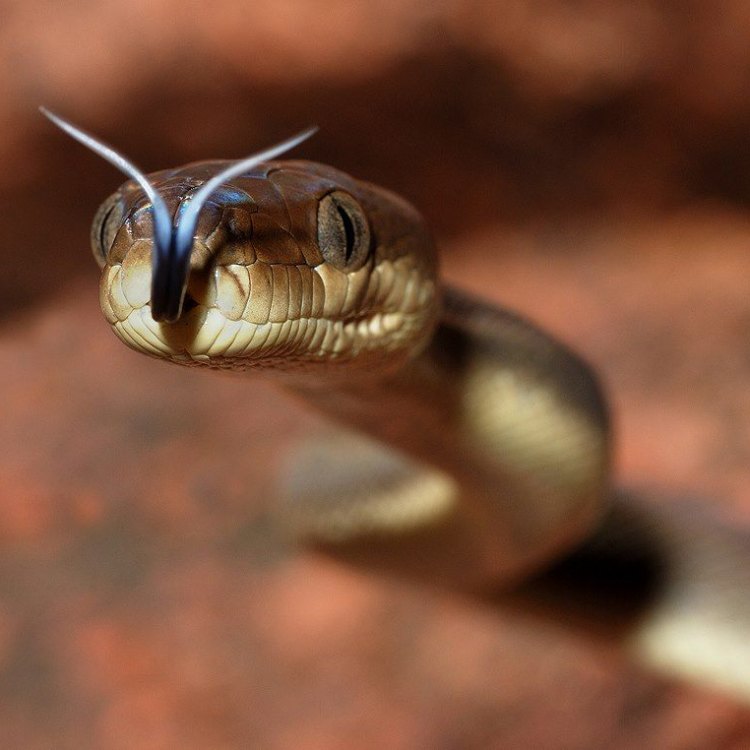
Olive Python
- Adult Size: Up to 4 meters
- Average Lifespan: 20-30 years
- Reproduction: Oviparous
- Reproductive Behavior: Females lay up to 50 eggs and incubate them until hatching
- Sound or Call: Hisses when threatened
- Migration Pattern: Non-migratory
- Social Groups: Solitary
- Behavior: Nocturnal and primarily terrestrial
- Threats: Habitat loss and degradation, illegal pet trade
- Conservation Status: Least Concern
- Impact on Ecosystem: Plays an important role as a predator in its ecosystem
- Human Use: Used in the reptile pet trade
- Distinctive Features: Head scales arranged in an irregular pattern
- Interesting Facts: One of the largest snake species in the world
- Predator: Humans, large birds of prey
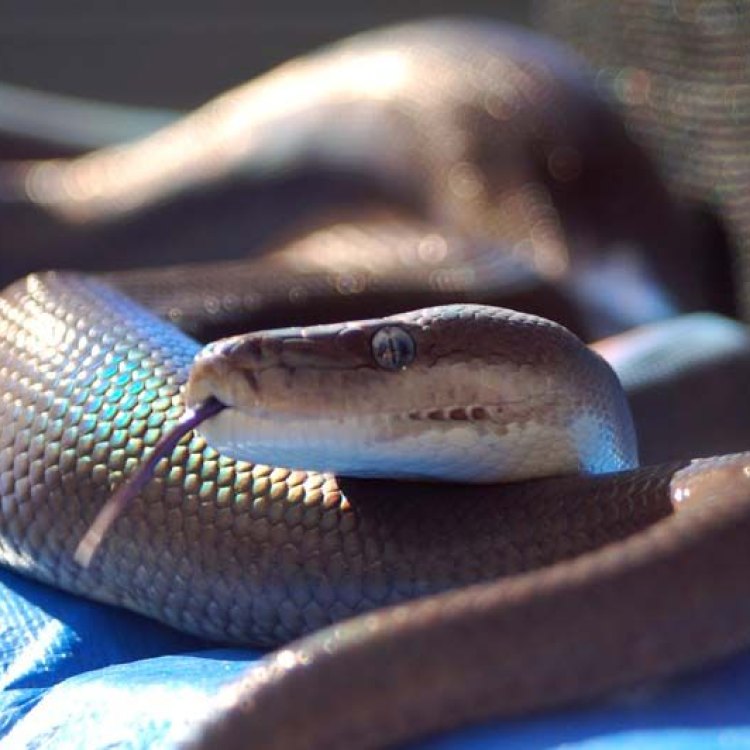
Liasis olivaceus
The Mighty Olive Python: A Fascinating Species in the World of Snakes
When it comes to the world of snakes, there are over 3,000 species to choose from, each with their own unique features and characteristics. Among these, the Olive Python (Liasis olivaceus) stands out as one of the most fascinating and intriguing. Known for its impressive size, unique physical appearance, and important role in its ecosystem, the Olive Python is a species that captures the attention of both reptile enthusiasts and general observers alike.In this article, we will delve into the world of the Olive Python and explore its distinctive features, behavior, threats, and impact on the ecosystem PeaceOfAnimals.Com. So, get ready to be amazed by this mighty python species.
Physical Appearance and Size
The Olive Python is a large and robust snake, with adult individuals reaching a size of up to 4 meters in length. This places them among the largest snake species in the world, along with other iconic pythons such as the reticulated python and the Burmese python.Their coloration is typically a dark olive-brown, hence the name Olive Python, with lighter cream-colored markings or blotches along their bodies. The scales on their head are arranged in an irregular pattern, further adding to their unique appearance.
Aside from their size and coloration, Olive Pythons are also known for their impressive strength. They have a muscular body with a strong grip, allowing them to constrict and overpower their prey easily.
Lifespan and Reproduction
Olive Pythons are a long-lived species, with an average lifespan of 20 to 30 years. Some individuals have been recorded to live up to 40 years in captivity Osprey. This makes them a popular choice among snake owners who are looking for a long-term companion.When it comes to reproduction, Olive Pythons are oviparous, meaning they lay eggs. Females typically lay clutches of up to 50 eggs in a single breeding season, which takes place every two to three years. The breeding season usually occurs in autumn and winter, with the eggs incubating for around 3 months. Interestingly, female Olive Pythons are known to coil around their eggs during incubation and can often be found basking in the sun with their eggs nestled between their coils.
Behavior and Social Groups
As solitary creatures, Olive Pythons do not form social groups and are often found alone. They are primarily nocturnal, meaning they are most active at night, and tend to be more active during the wet season when their prey is more abundant.In terms of their behavior, Olive Pythons are primarily terrestrial, spending most of their time on the ground. However, they are also capable swimmers, which they use as a means of escape or to capture aquatic prey.
When threatened or disturbed, the Olive Python will emit a loud hissing sound, which is often enough to ward off predators. However, if the threat persists, they will use their muscular bodies and strength to constrict and defend themselves.
Threats and Conservation Status
Like many other snake species, Olive Pythons face various threats to their survival. Habitat loss and degradation are among the primary threats, with deforestation and land development destroying their natural homes. This is particularly a concern in Australia, where the majority of the Olive Python population resides.Another threat is the illegal pet trade, where these snakes are often captured and sold as exotic pets. However, it is important to note that the Olive Python is protected by law in many countries, and it is illegal to capture or trade them without proper permits.
Despite these threats, the Olive Python is currently listed as Least Concern on the IUCN Red List of Threatened Species. This is due to their wide distribution and relative abundance in their natural habitat.
Impact on the Ecosystem
As a top predator in its ecosystem, the Olive Python plays an important role in maintaining balance and controlling populations of other species. They prey on a variety of small mammals, birds, and reptiles, and their presence helps to prevent overpopulation of these species.Moreover, Olive Pythons are also important prey for other predators, such as large birds of prey like eagles and hawks. So, their presence in the food chain is vital for the survival of these apex predators as well.
Human Use and Interesting Facts
One of the most famous uses of the Olive Python is in the reptile pet trade. Their impressive size and unique appearance make them a popular choice among snake enthusiasts. However, as with any exotic pet, responsible ownership and proper permits are necessary to ensure the well-being of these creatures in captivity.Aside from their role in human use, Olive Pythons have some interesting facts that make them stand out even more. As mentioned earlier, they are one of the largest snake species in the world, alongside the reticulated python and Burmese python. They are also known for their incredible strength, with the ability to constrict and overpower prey much larger than them.
Another interesting fact is that Olive Pythons are confined to Australia, making them a unique and sought-after species for reptile enthusiasts around the world.
Predators and Conclusion
Unfortunately, the biggest predator of the Olive Python is humans. Deforestation, illegal pet trade, and hunting for their skin and meat continue to threaten their survival. It is our responsibility to protect this magnificent species and ensure its conservation for future generations to appreciate and learn from.In conclusion, the Olive Python is a fascinating species that stands out among the many other snakes in the world. From its impressive size and unique physical appearance to its important role in its ecosystem, this mighty python commands respect and admiration. So, let us work together to protect and preserve this species, ensuring that it continues to thrive in its natural habitat for years to come.
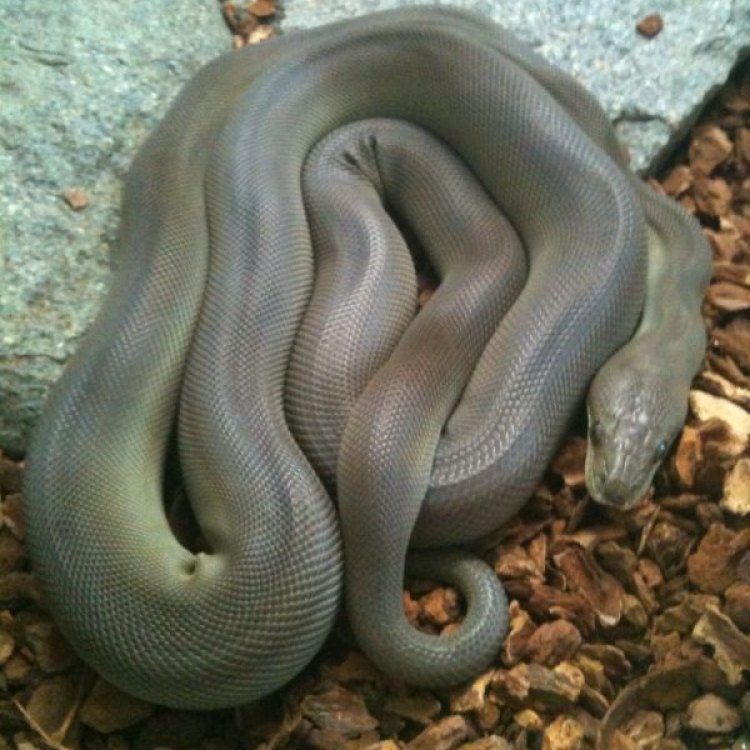
The Magnificent Olive Python: A Giant of the Australian Wilderness
Disclaimer: The content provided is for informational purposes only. We cannot guarantee the accuracy of the information on this page 100%. All information provided here may change without prior notice.


